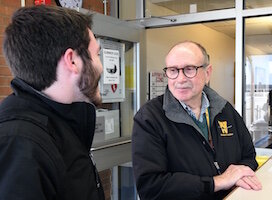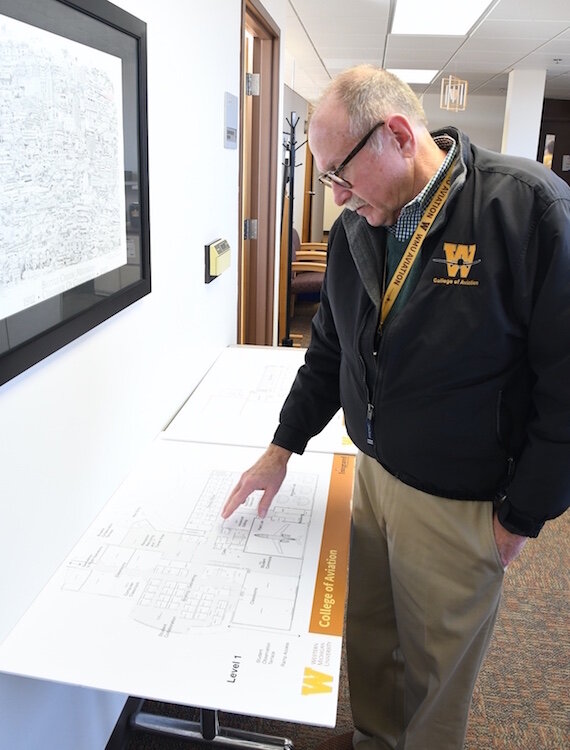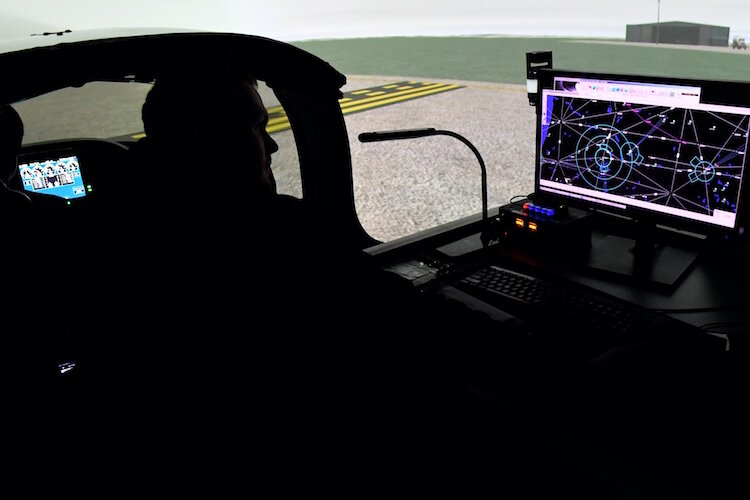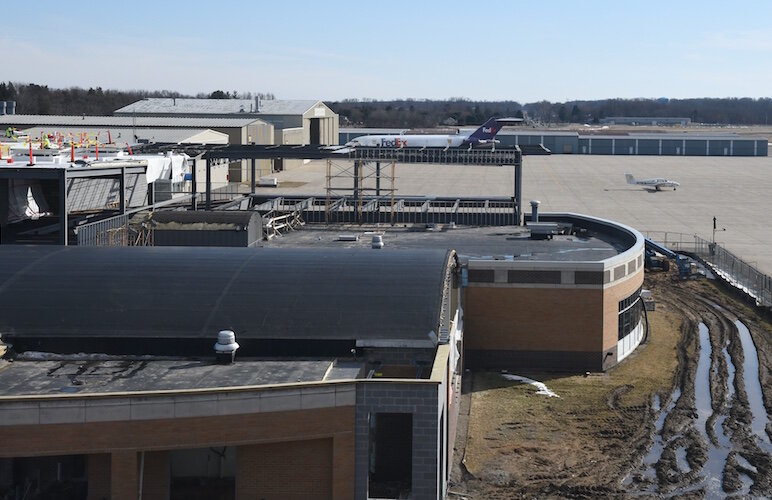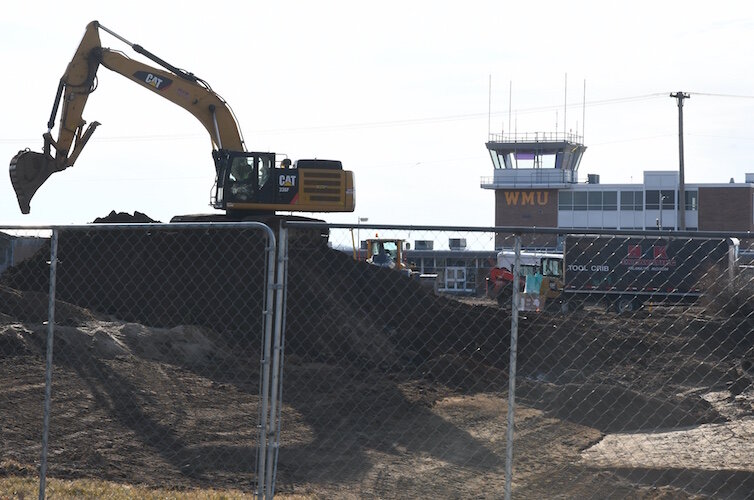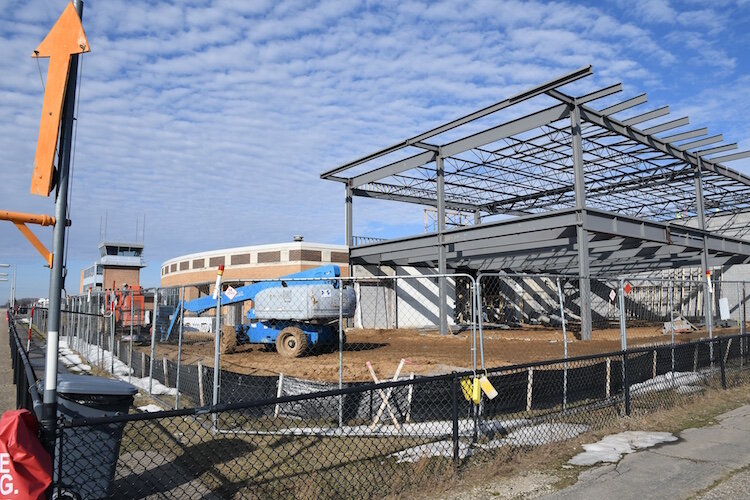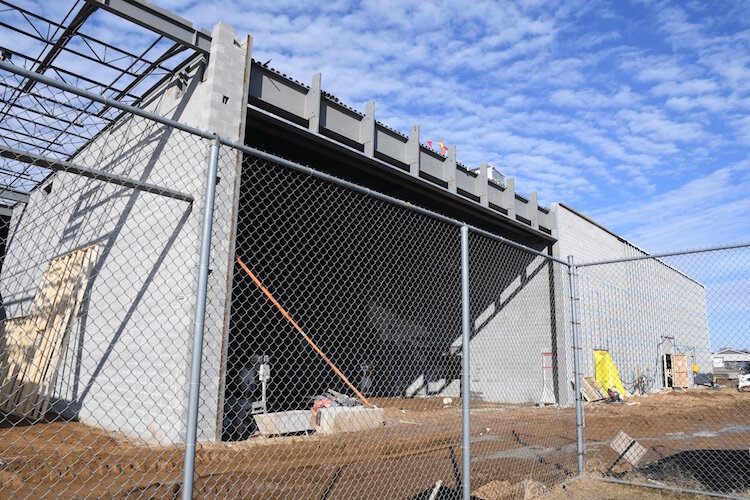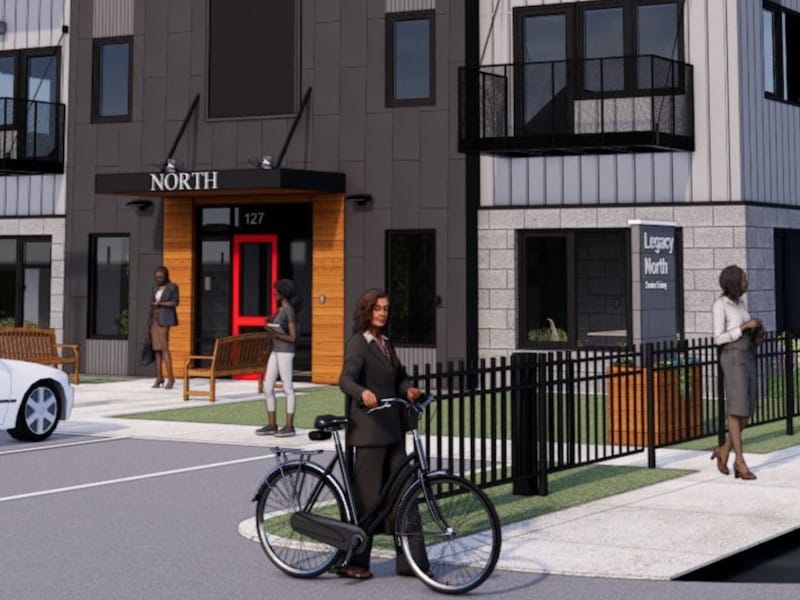Against the backdrop of a runway with aircraft taking off and landing, new buildings are going up as part of a $22 million expansion of Western Michigan University’s College of Aviation at the Battle Creek Executive Airport at Kellogg Field.
As he watched the activity both on and off the runaway from the airport’s tower, Dave Powell, Dean of the College of Aviation, says WMU officials determined that the growth in student demand over the past five years warranted the addition of a new 66,000-square-foot building. It will provide added classroom space, a computer room, and a state-of-the-art simulation center.
The new location, expected to be completed in the Fall of 2020 will also include a research center, student briefing rooms, as well as faculty office space, a cafe, amenities, and upgrades in technology and laboratories.
“When I first got here we had about 600 students,” Powell says. “Today, we have 1,150 and right now we’re forecasting to have another 150 students in the next year or so, which will bring us up to 1,300 students.”
Powell says this uptick is reflective of an increasing demand for pilots, mechanics, and managers nationally. According to the Federal Aviation Administration, the U.S. currently has 159,000 active airline transport pilots. And there will be a need for 759,000 pilots worldwide in the next 20 years, he says.
Statistically, half of the pilots from American Airlines, Delta and United — the three major U.S. carriers — will retire in the next 10 years at the same time that the flying public will increase by two billion people worldwide mainly due to the economic growth in third-world countries, Powell says

In February, the leadership of the aviation school began a program with United Airlines called Aviate that offers students a direct career path to become a pilot with the air carrier.
Once accepted into the program, students will complete their four-year degree, then put in a minimum of 1,000 hours of flying time, and then work two years with a United Express Aviate partner before transitioning to United as a first officer, says Captain Curtis Brunjes, United’s Managing Director of Pilot Strategy, during a press conference to announce the partnership.
In 2018, WMU became one of eight universities to partner with Delta Airline’s Propel program, which is similar in scope to Aviate. About 60 students with the College of Aviation are in the Propel program, Powell says.
The physical expansion of the College of Aviation is making it possible to support these partnerships. Prior to the expansion, the aviation school was working with 16,000 square feet of academic space which made for tight quarters for students and staff.
The project comes at a time when many colleges and universities in Michigan are seeing declines in enrollment, the exceptions being Michigan State University and the University of Michigan which are stable, Powell says.
The reasons for the declining numbers include decreasing birth rates and delays in having children that are leading to fewer high school graduates. Another factor in the downturn in student enrollment at Michigan colleges and universities, Powell says, is people who are moving south in search of warmer climates and greater job opportunities. If they have children, it’s less likely those young people will attend a higher education institution in Michigan.
“Between now and 2032, these numbers will stabilize,” Powell predicts.
As one of the top three aviation schools in the United States, WMU’s College of Aviation has been immune to the declining enrollments being experienced elsewhere. Regardless, Powell says he and leaders at WMU don’t want uncontrolled growth that doesn’t deliver the quality now offered.
“When a parent sends their child to us, they’re giving us the most valuable thing they have, their child, and then it’s their money. I want them to understand that I appreciate that,” Powell says.
“I tell that to all of the prospective students and parents. I make no apology for being a parent, but I’m not trying to take the parents’ place, to hold their kids accountable and have them get to class. My job is to help any young person who wants to get a great education to be successful.”

That “any young person” has always included minorities and Powell has increasingly been putting more of a focus on the need for the College of Aviation to be more diversified. Powell says that about 7 percent of all pilots and airline mechanics in the United States are minorities.
Unlike other professions where demographics such as sex or race come into play even though those making the hiring decisions may deny it, Powell says the airline industry focuses on an employee’s level of experience and ability.
That’s been the experience of Brian Johnson, who is based out of Detroit and has been flying for a regional carrier owned by a domestic legacy airline for three years. In the airline industry, “you really are just a number,” he says. While this approach may be viewed as a negative in some corporate environments, Johnson says this makes sense for pilots, many of whom came out of the military where being a number is the norm.
“We all have to have a minimum level of certification to be eligible. We’re all on the same level playing field,” Johnson says. “Everything in aviation is seniority-based. You’re just a number at the company and once your number comes up, you can choose to fly a bigger plane, but I can do this at my leisure.”
The plane Johnson currently pilots is a 76-seater regional jet that primarily flies domestically with occasional flights to Canada, Cuba, Mexico, and the Bahamas. The largest aircraft operated by the domestic legacy airline he works for is a Triple 7 with a 300-passenger occupancy.
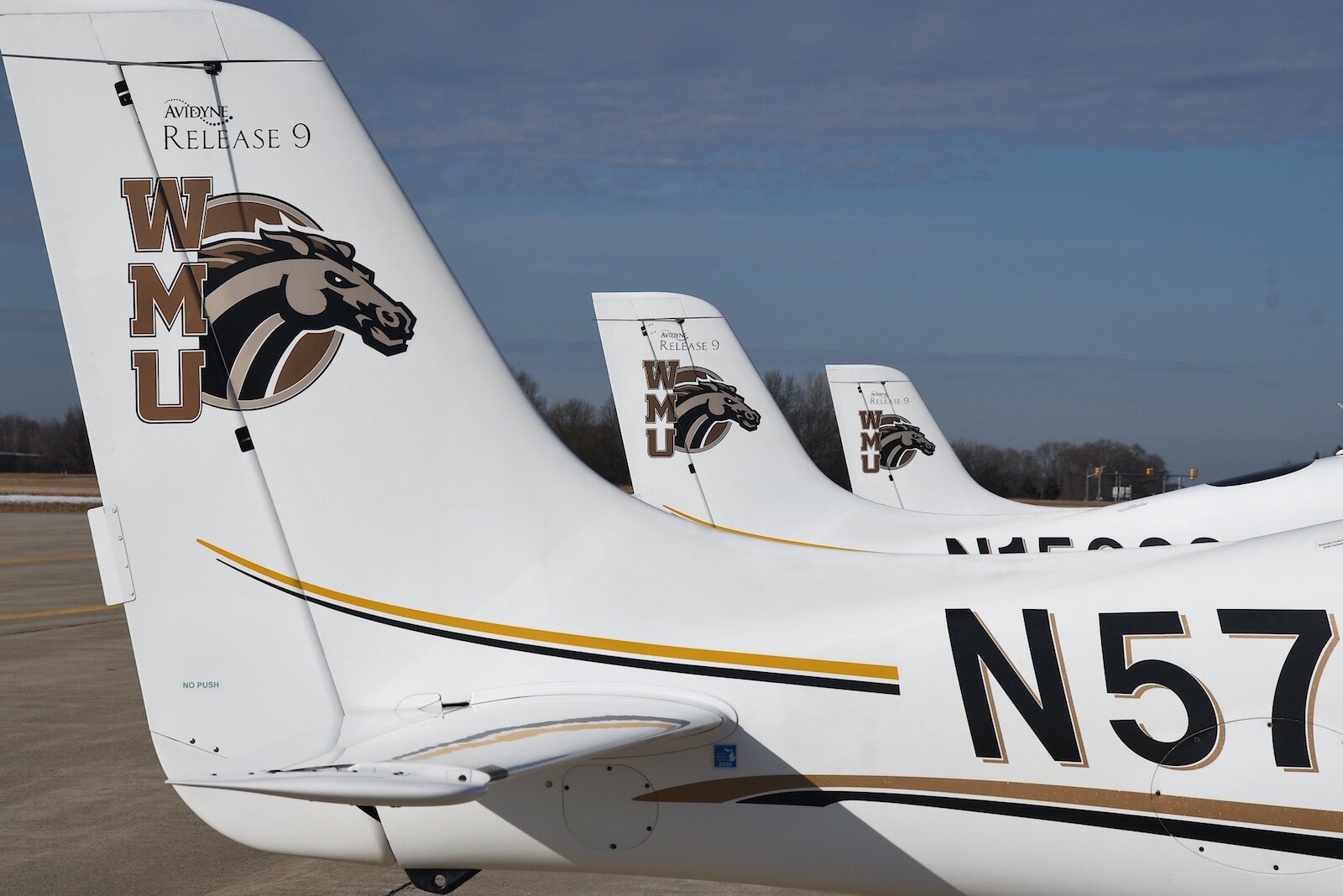
“There are two tracks I can take,” he says. “One is to chase more money and fly bigger airplanes or to have a certain quality of life. My company has a large plane fleet and all kinds of routes. I can make a request to fly the biggest plane that pays the most. If you put yourself into that pool it will take you longer to go up that ladder.
“For me, on my plane, I’ve got pretty much seniority which means I get the days off when I want them. A lot of people choose to chase the biggest and some people chase quality of life. I just like to fly, so I don’t care what I fly.”
Johnson, who is African American, says if there are racist attitudes in the airline industry, he has yet to see it. He estimates that a substantial number of the pilots now flying got into the profession because they had a family member who also was a pilot and he says that this historical trend has meant the field is traditionally dominated by individuals who identify as white.
“It is still definitely a white-male dominated industry,” Johnson says.
The son of a single mother in inner-city Detroit, Johnson says the majority of his peers opted for careers that offered more immediate gratification or an easier way out of their current circumstances.
“In the minds of my peer group, a lot of people hedge their bets and don’t have a backup plan,” he says. “Other more stable careers like being a pilot or a doctor require more schooling and delayed gratification tends not to be as possible for some of them.”
At times, he says, earning the licenses and certifications required to become a pilot was an “onerous journey.” The airline industry is the most highly regulated and there is no immediate payoff, he says.
“I’ve been flying for 13 years. For the first eight years I didn’t make any money at it,” Johnson says. “For three years after that I worked smaller odd jobs in flight instruction and charter flying just to build up my experience.”
His initial exposure to flying happened when he was 11-years-old. His mother and a friend bought him a discovery flight at a local airport. While he had an interest in it, he says he doesn’t remember having an “aha” moment when he knew this is how he wanted to spend the rest of his life.
“I just remember from my earliest memories that I was fascinated by flight and how something that weighs several hundred thousand pounds could fly through the air at such fast speeds,” Johnson says.
After enrolling at the University of Michigan at Dearborn where he earned a Bachelor’s degree in Hispanic Studies, Johnson says he “moseyed” out to the local airport and began taking flying lessons at the age of 19. Now 31, Johnson says he is part of a grassroots effort to expose more minority youth to careers in the airline industry.
“There are a decent amount of black pilots out there, but right now it has to be a grassroots effort for those of us who are in the industry to go out into the community and be role models,” he says.
“There are awesome organizations that are trying to increase awareness, especially minority youth programs in Detroit where volunteer pilots will give free flights to middle and high school students to expose them.”
Powell says financially the College of Aviation is not able to do this. “We are a state-funded school and we don’t have enough money to offer free flights,” he says.
Johnson says pilots are held to a much higher standard than those who are employed in the airline industry in jobs such as ticket agents or baggage handlers.
“If you’re going to be a pilot, visible tattoos and/or a criminal history can severely limit your options. These are things that disproportionately affect the minority community and make you ineligible from the start,” Johnson says.
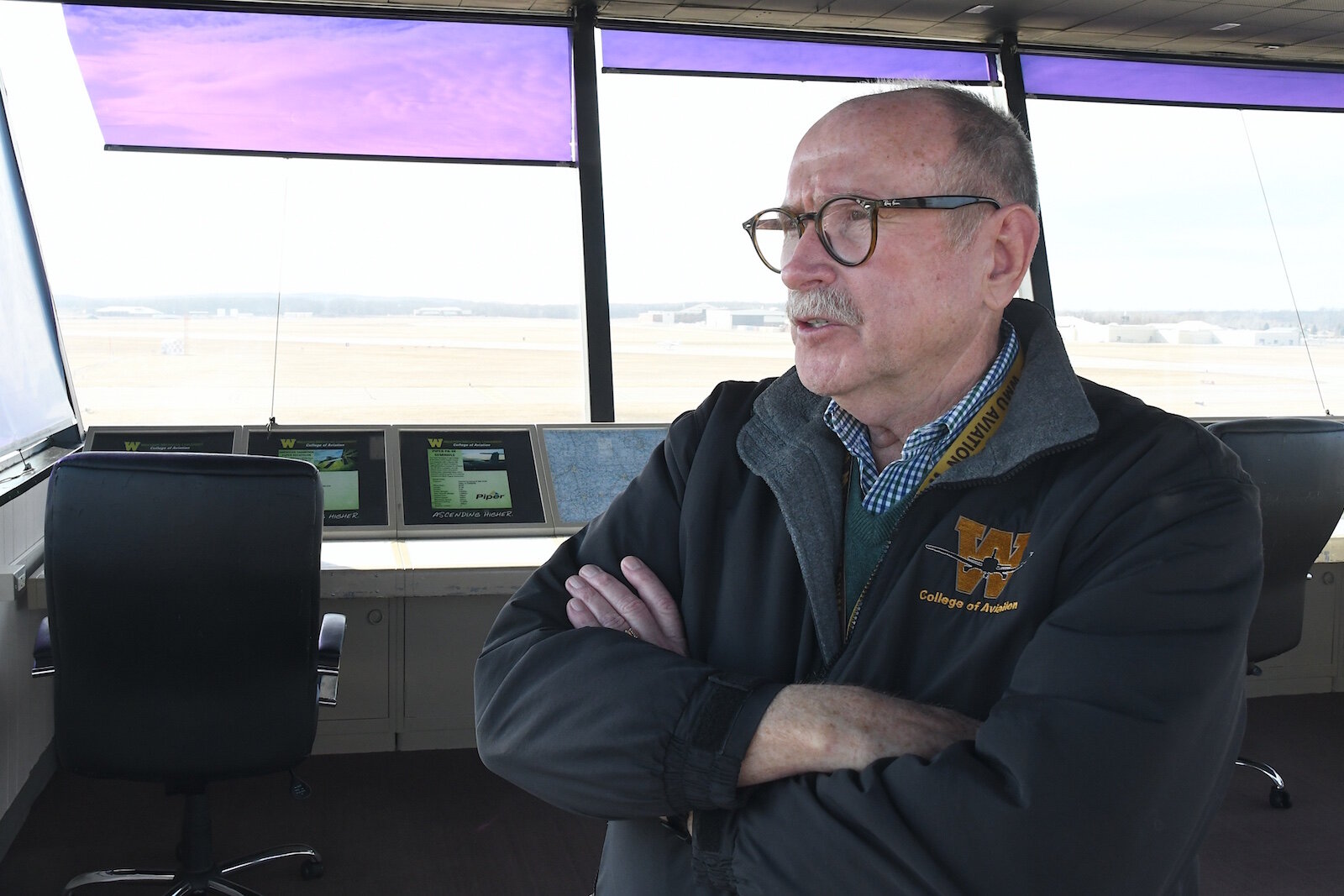
Powell says pilots need to be well-rounded individuals who are able to engage people in conversations. He encourages his students to get involved in aviation-focused organizations and says that the focus for him beginning on their first day of school is to keep them enrolled. Among the national organizations that have local chapters for students at the College of Aviation are the National Gay Pilots Association, Black Aerospace Professionals, and Women in Aviation.
“We were the second College of Aviation in the U.S. to have a National Gay Pilots Assocation,” Powell says, adding that there are at least 13 aviation-related organizations for WMU students to join. “As much as I’d like to say that it’s my efforts that retain the students, they’re really looking to me for the big guidance, but the day-to-day ‘get me through life’ stuff is where support from these organizations really helps them. It helps them to be able to interact with people who look like them and share similar interests.”
Through donations received by the College of Aviation, Powell says he is able to give these organizations money to offset travel costs to meetings or conferences.
“My job is to make them the best they can be,” Powell says. “You’re not only a pilot, you’re a walking billboard for that airline you’re flying for,” he says.
Powell says 33 percent of the total number of students in the College of Aviation represent different sexes, races, and ethnicities.
“We recruit from all over. We have a lot of students from Michigan,” Powell says. “Sixty-five percent of our incoming class this past fall were in-state and the rest were from Illinois, Indiana, Ohio, Korea, or just about anywhere.”
But, so far “anywhere” doesn’t appear to include students in the Kellogg Airport’s own backyard.
“Battle Creek has such a diverse community, but we get very, very few students from Battle Creek in our program,” Powell says. “We have struggled and struggled with this. We now have anywhere from 1,500 to 1,800 students from first grade up to middle school who visit our program in the summertime. We give tours here from 9 a.m. to 6 p.m., six days a week. I have student ambassadors on standby to do this.”
Despite this exposure, Powell says he thinks people don’t appreciate that they can get into aviation or the opportunities they can realize from enrolling. He says his students graduate on time and have the opportunity to earn more than $300,000 annually at the height of their careers.
“There are over 250 aviation programs in the United States and we’re the third largest,” Powell says. “I’m hoping that when people see the new building they’ll maybe have an interest in walking through the door and give us the opportunity to explain how they could be a part of the program.”

